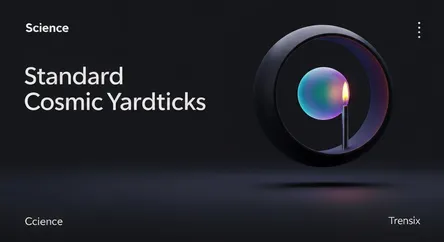Science
Standard Candles: Cosmic Yardsticks

Discover standard candles, astronomical objects with known brightness used by scientists to measure vast distances across the universe and map its expansion.
What is it?
A standard candle is an astronomical object that has a known, well-defined intrinsic brightness, or absolute magnitude. Think of it as a cosmic lightbulb of a specific wattage. Because its true luminosity is known, astronomers can measure its apparent brightness as seen from Earth and calculate its distance using the inverse-square law. The dimmer the object appears, the farther away it is. The two most famous types of standard candles are Cepheid variable stars, whose pulsation periods are directly related to their luminosity, and Type Ia supernovae, powerful stellar explosions that all reach a similar peak brightness.
Why is it trending?
Standard candles are at the heart of a major cosmological debate known as the "Hubble tension." Measurements of the universe's expansion rate (the Hubble constant) using standard candles in the nearby universe don't align with predictions based on the cosmic microwave background radiation from the early universe. Advanced telescopes like the James Webb Space Telescope (JWST) are making more precise observations of standard candles than ever before, hoping to resolve this discrepancy and potentially uncover new physics.
How does it affect people?
While not impacting daily life, standard candles are fundamental to our understanding of the cosmos. They are the primary tool for measuring the immense scale of the universe and its rate of expansion. It was through observations of Type Ia supernovae that astronomers discovered the universe's expansion is accelerating, leading to the theory of dark energy. This research answers fundamental questions about our place in the universe, its age, and its ultimate fate, driving human curiosity and technological advancement.